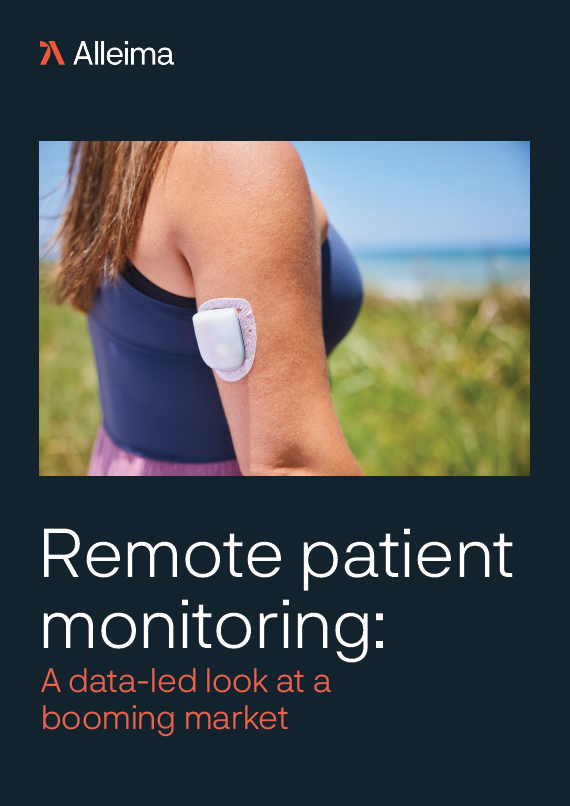
Since the Covid-19 pandemic erupted in 2020, digital health transformation has touched all areas of healthcare, with MedTech leaders and health providers championing new technologies to improve patient care.
However, a new investment report by Rock Health indicates that in 2022 the investor bubble burst, with funding declining to $15.3 billion, a significant underperformance compared to 2021’s $29.3 billion. The negative funding trajectory has been attributed to investor caution due to uncertain global markets.

US Tariffs are shifting - will you react or anticipate?
Don’t let policy changes catch you off guard. Stay proactive with real-time data and expert analysis.
By GlobalData“For the digital health sector, 2022 was a downhill ride—one that we think signals the tail end of a macro funding cycle centered around the Covid-19-era investment boom,” wrote report authors Kyle Bryant, Madelyn Knowles, and Adriana Krasniansky.
“This may carry both positive and negative connotations for the sector as the investment market recalibrates to a more sustainable rate. With recession concerns looming, H2 2022’s quarterly average of $2.4 billion may be a bellwether for the next several quarters—which means that 2023 could be digital health’s first $10 billion or lower year in venture funding since 2019. However, there are signals that funding could start to inch back up again: investors have dry powder stockpiled, and difficult exit climates are likely to draw late-stage digital health companies back to the fundraising table.”
With healthcare systems facing economic pressure, reimbursement is still a critical issue. The sector is struggling to regulate and reimburse digital health technologies – causing a slow uptake with patients and payers. In the U.S., existing Current Procedural Terminology (CPT) codes, which are reimbursement codes used by the Centers for Medicare & Medicaid Services (CMS) for federal healthcare delivery programs, were limited for digital health technologies and telehealth before 2018.
Since then, an older CPT code (99091) and four newer CPT codes (99453, 99454, 99457, 99458) allow for reimbursement of services that include training a patient how to set up and use remote patient monitoring technologies, reviewing remotely collected remote patient monitoring data, and consulting patients regarding their remote patient monitoring data.
According to Accenture’s European medical technology lead Philip Frey, increased pressure on health systems can serve as a catalyst for digital health transformation but reimbursement models need to shift to incentivize healthcare practitioners to adopt digital solutions.
“I think that healthcare is one of the sectors that can be resilient in a crisis as it’s an imminent need and the tools under development in digital health are designed to make health care more accessible in terms of lowering costs,” he explains.
“As long as companies are providing more efficient solutions to the market that leverage digital, the benefit and advantages will be recognized by providers but need to be supported by reimbursement models.”
Digital health trends on the horizon
A report by Accenture found that MedTech leaders are centering digitalization in their business strategies, with companies switching their focus from products to patients. The global survey of more than 150 MedTech executives found that executives are adopting digital health as a core part of their approach to improve patient outcomes. Three-quarters (75%) of the executives said that expanding care settings will significantly reorient their company’s long-term strategy and business models.
The respondents were distributed across 30 MedTech companies with median 2021 global revenues of nearly $10 billion. Around 86% of respondents agreed that success in digital health will depend on companies targeting the entire care pathway rather than specific products and services.
“I think it will be very interesting to see companies move closer towards the patient, especially ones that have operated historically just as equipment manufacturers,” says Frey. “Digital health products need human-centric design. The traditional approach to engineering has been about products but when companies are approaching innovation from a patient centric perspective then they become more problem focused. They reorient who is at the center of care and put their operations and value chain behind that.”
For the report, Accenture also surveyed 30 senior executives across MedTech and pharma and analyzed 100 M&A deals and 600 product launches between January 2019 and March 2022. The findings identified several key trends driving the growth of the digital health market, including the rise of consumer patients that demand “anywhere, everywhere” healthcare.
“People no longer anticipate healthcare as being a one-way, one-size-fits-all transaction,” explains Frey. “Rather, they’re demanding a combination of factors which allow for continuous engagement in how people manage their wellness.”
Naturally, as consumers take more control of their health, they are also becoming involved with decision making. “This is leading to increased importance in the consumer/physician experience and puts increasing pressure on physicians to adopt digital tools.”
On the investor side, healthcare entrepreneur Mano Iyer, believes the landscape is moving towards diagnostics. In January, Iyer joined European venture capital firm Sofinnova to lead Sofinnova’s global medical device investment opportunities, with a particular focus on its in-house medtech accelerator, Sofinnova MD Start.
The accelerator’s investments include Moon Surgical, a Paris-based company developing a surgical robot for laparoscopy assistance and Advanced Perfusion Diagnostics, the developer of a single-use device for continuous assessment of microcirculation in critical care and surgical settings.
“It used to be challenging to invest in the diagnostics space and there was a lot more work needed to create the baseline data set necessary to justify the diagnostic tool. But now with access to much larger datasets, and the ability to leverage machine learning and AI to rapidly assess data, what used to take years is now taking minutes,” says Iyer.
Wearable technologies such as Apple Watch and personalized health services, like Inside Tracker are also reshaping the healthcare landscape and retail companies are making big investments to deliver direct to consumer technologies.
“There is a tremendous amount of development in this space, and I think there’ll be a lot more investment dollars flowing into it. Women’s health is another area of digital health that is poised for major growth and one we are particularly excited about at Sofinnova.”
Overall, the long-term success of digital technologies will rely on how they can be leveraged across the full spectrum of prevention, diagnosis, and treatment.
“There’s a lot more interest now in patients owning their data and we are seeing more investments and companies being built to support this,” says Iyer. “I think that links to how datasets can be also used by companies to develop technologies for patients in personalized medicine and drug discovery. The whole area around ChatGPT is one that is also fascinating and I’m sure the healthcare world will be watching to see how these technologies can be leveraged to transform how care is provided in future.”







